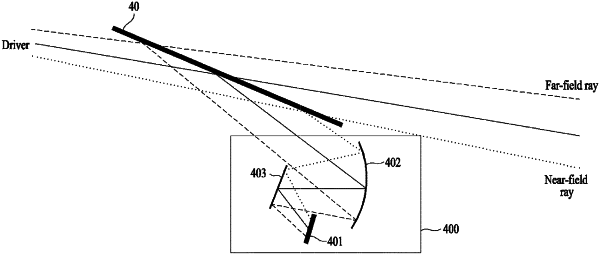| CPC B60K 35/00 (2013.01) [G02B 26/0816 (2013.01); G02B 27/0101 (2013.01); G02B 27/0179 (2013.01); B60K 2370/149 (2019.05); B60K 2370/1529 (2019.05); B60K 2370/1531 (2019.05); B60K 2370/179 (2019.05); B60K 2370/182 (2019.05); B60K 2370/23 (2019.05); B60K 2370/31 (2019.05); G02B 2027/0187 (2013.01)] | 10 Claims |

|
1. A three-dimensional (3D) augmented reality head-up display of a vehicle, comprising:
a display device configured to function as a light source; and
a freeform surface mirror configured to reflect light from the light source toward a windshield of the vehicle,
wherein an image created by the light from the light source is focused on the ground in front of the vehicle as a virtual image of a 3D perspective through a reflection scheme of reflecting the light from the light source on the windshield by the freeform surface mirror,
wherein the virtual image is created based on an imaging condition among a display plane corresponding to the display device, a mirror plane corresponding to the freeform surface mirror, and a virtual image plane corresponding to the ground,
wherein the imaging condition is met when, based on a lens formula, the light from the display device is focused on the virtual image plane by the freeform surface mirror, and
wherein, under the imaging condition being met, a separation distance (S) between the display device and the freeform surface mirror is determined based on a height value (h) from the virtual image plane (IP) to an optical center (C) of the freeform surface mirror, an angle (3) between the display plane (DP) and the virtual image plane (IP), an angle (γ) between the mirror plane (FMP) and the virtual image plane (IP), and an angle (θ) between the display plane (DP) and the mirror plane (FMP).
|